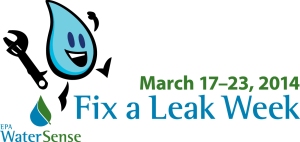by Charlene Burgi
Have you ever been in a hurry and patched something together just to make it work? The quick fix may be intended to be temporary, but it is soon forgotten because the “band-aid” is still holding—by the skin of its teeth!
Admittedly, it doesn’t take much to forget the patch and be lulled by the warm sun that urges us to embrace a day of fun. After all, the electrical tape is still (almost) stopping the leaking hose. The valve can still work if it is turned on manually. And the epoxy putty seems to be doing the job on that P-trap under the sink. It is so easy to miss the magic words in the directions that state it is a temporary fix. And these fixes are just that—temporary.
I have learned over the years that temporary fixes can be costly! A few years ago, someone used an epoxy “band-aid” on a pipe under my kitchen sink. I had no idea it was there when I bought the house. And the product was as good as its word. Shortly after new hardwood floors were installed in the kitchen, the epoxy putty revealed its existence and the limits of its longevity. The slow leak seeped under the sink cabinet and made its way under the beautiful hardwood floors. The wood swelled ever so slightly in the form of a slight ridge. Then the buckling began. The insurance company wouldn’t cover the loss since the leak had existed for some time—albeit undetected! Fortunately, the hardwood floor person I use is a true craftsman and was able to repair the damage in short order, and I learned to install plastic trays under my sinks as added insurance!
I often wonder how we get sidetracked or put leaks or breaks on hold. I remember people calling the water district to say their toilets flushed all by themselves. Did they know their toilet was leaking so severely that the water tank level needed to replenish itself and so flushed automatically to refill? Or does anyone realize they are robbing their plants of water if the water pressure is so high on their irrigation system that the water droplets atomize into the atmosphere before ever making it to the ground? That mist you see with high water pressure isn’t helping the root system that feeds your plants. A broken irrigation line can cause another serious hit to the pocketbook if it is flooding one area of the garden while failing to deliver water to the plants in another. In addition to water lost, the parched plants may be lost, too.
Another temporary fix is replacing a missing sprinkler head with the wrong size and type nozzle. Why would that matter? The gusher stopped, didn’t it? Let’s take a closer look at this band-aid. Some nozzles are rotors, some spray, and some are impacts—and they all perform differently. In addition, different irrigation manufacturers sell spray nozzles that provide different gallons per minute and throw water different distances. To keep things simple, let’s assume the spray nozzles installed in your garden provide three gallons of water per minute per nozzle. And let’s say all the nozzles on the valve are throwing the irrigation water 15 feet in order to attain head-to-head coverage for good distribution uniformity. (Distribution uniformity is applying water evenly to an area so it comes down like rain and the entire area receives an equal depth of water.) What would happen if the nozzle installed for a temporary fix only produced one gallon of water per minute? Or the temporary nozzle only threw out enough water to cover eight feet instead of 15 feet? It wouldn’t take long for a dry spot to develop while the warm sunny days found you away, playing in the sun.
My husband Jack has a motto that is good to live by: Do it once, do it right. It will save you time and money in a long run. If you are not certain how to “do it right,” hire a licensed plumber for indoor water issues or a licensed landscape contractor that specializes in irrigation. Then you can relax while taking in this beautiful weather!









